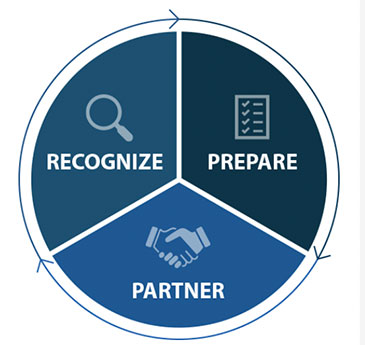“Imagine that you turn on the news one day and hear that the water you have used for many years, drinking freely, believing it to be safe, pure New Hampshire groundwater…is contaminated with odorless, tasteless, toxic PFAs chemicals.”
This is what happened to Laurene Allen of Merrimack, New Hampshire, in 2016. Allen, who went on to form the National PFAs Contamination Coalition, spoke during an APHA 2021 session on “Community Engagement during Public Health Responses to Environmental Contamination: New Tools from ATSDR,” held earlier today.
Allen offered a community perspective on how state and local officials and public health professionals can use tools from the CDC’s Agency for Toxic Substances and Disease Registry to better engage with communities about environmental stress.
“The first thing that happens after an environmental exposure is a community meeting,” Allen said. “State officials come in, give the facts and answer questions. At our meeting, they didn’t have many answers, just kept talking about ‘emerging contaminants.’” There was no official acknowledgement of the presence of PFAS in the drinking water, she said, and the poor community engagement led to “a huge wave of anger and distrust and community stress.”
In 2019, Allen said she met Ben Gerhardstein, a scientist at ATSDR, at a conference. She was there with the National PFAs Contamination Coalition, and “he wanted to talk to us about our stress!” she said. “The government! Didn’t he understand the stress was from the government not working fast enough?” Allen said this kind of community distrust in institutions doesn’t have to happen.
 “The tools that public health officials have now are more robust and accessible than they were in 2016,” Allen said. In fact, her group and other stakeholders met with Gerhardstein and provided input on the creation of ATSDR’s Community Stress Resource Center.
“The tools that public health officials have now are more robust and accessible than they were in 2016,” Allen said. In fact, her group and other stakeholders met with Gerhardstein and provided input on the creation of ATSDR’s Community Stress Resource Center.
Also presenting at the session, Gerhardstein said the resource center grew out of decades of ATSDR work on community engagement. “Communities affected by environmental contamination have different practical, informational, social and emotional needs,” Gerhardstein said.
For example, the center’s 3 Keys Framework helps public health professionals understand, prevent and address problems that cause stress and stress-related health risks in addition to the health risks of exposure.
“The key is to get the word out that these things exist, and you can use them to work with communities,” she said. “The main thing is, if you can’t acknowledge the harms, acknowledge the impacts. I understand that, sometimes, you can’t say things as an official that carry a liability, but you can bring forward the resources that you know are there. You can help people reduce their exposure, build their resilience and become survivors instead of victims.”